Convert the following:
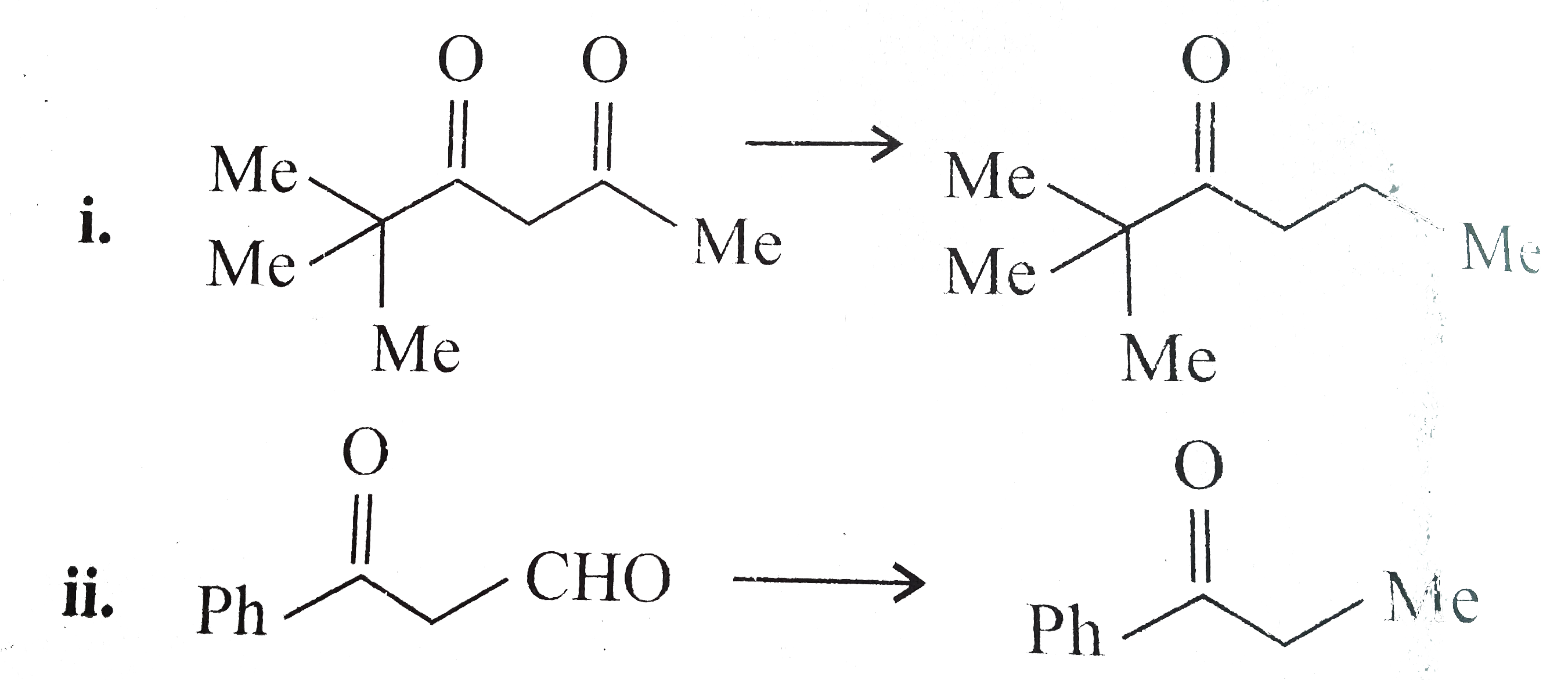
How will you decide whether Clemmensen, Wolff-Kishner, or Raney Ni desulphurisation is the most efficacious for reducing a carbonyl compound?
a. i. Unhindered keto group is converted to cyclic ketal and then followed by reduction with by reduction with Raney Ni.
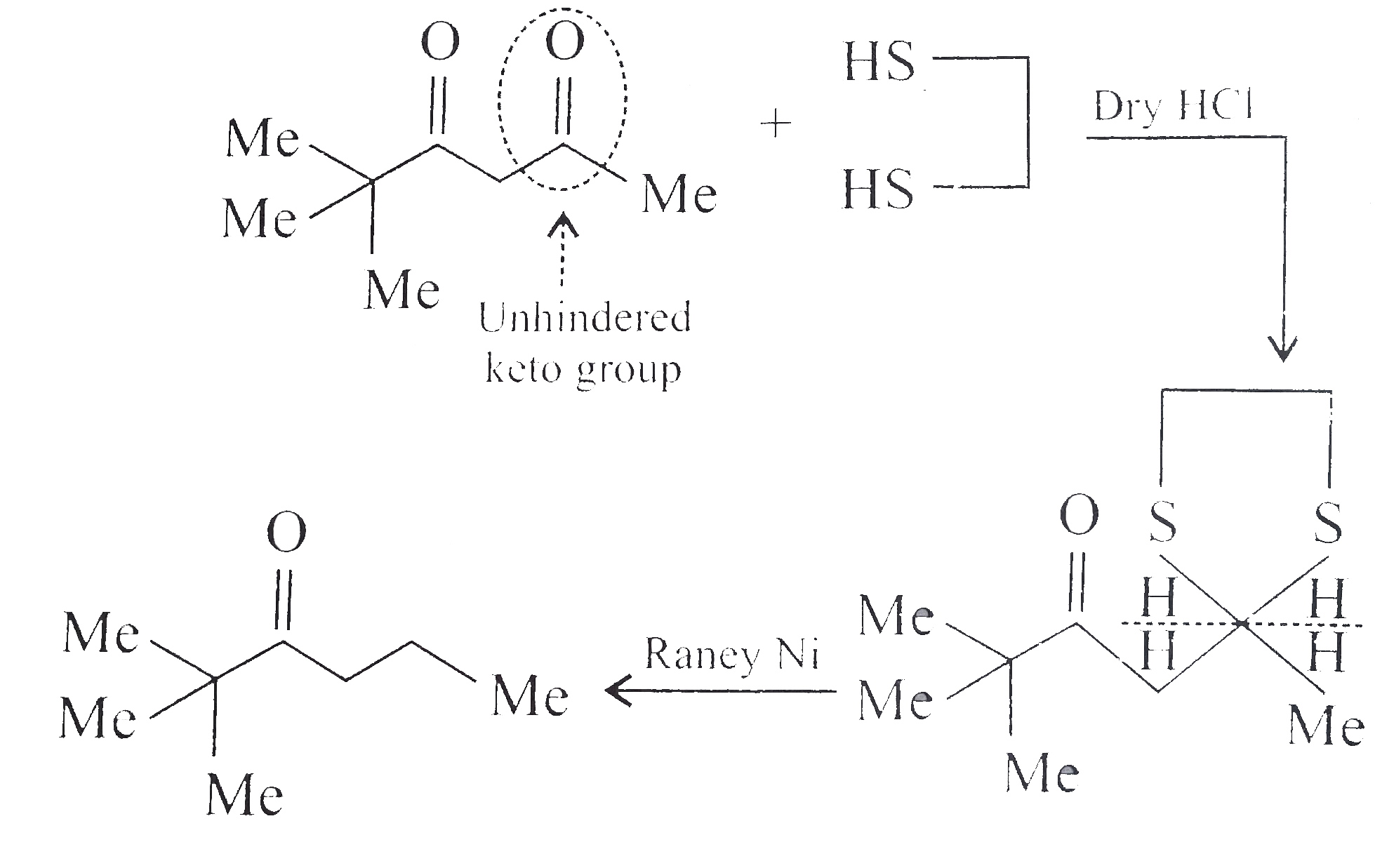
ii. A ldehyde is more reactive than the keto group and is converted to cyclic thio acetal and the reduction is effected with Raney Ni.

b. 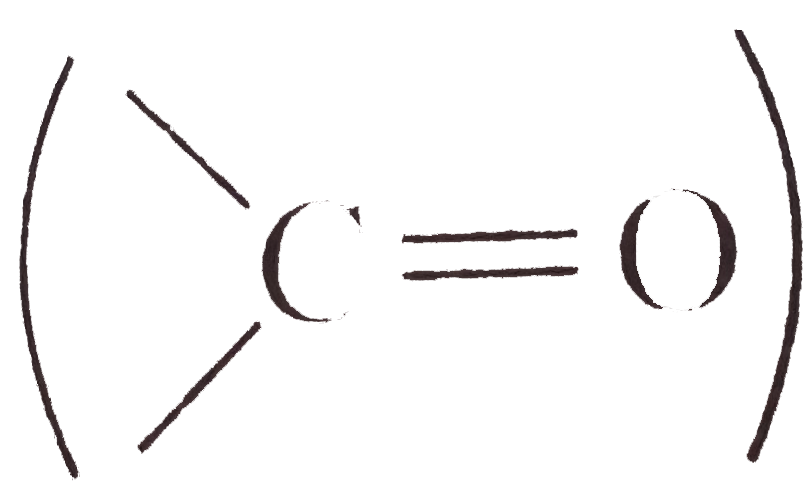
group together with other functional groups that react with strong base must be reduced by Clemmensen reduction, provided they are stable in acid. If they are sensitive to acid and stable in base W.K. method should be used . Raney Ni desulphurisation occurs under neutral conditions, but it cannot be used with reactions with good leaving groups (such as Iɵ) because (-SH) group is an excellent nucleophilic group.
Topper's Solved these Questions
- BOOK - CENGAGE CHEMISTRYCHAPTER - REDUCTION AND OXIDATION REACTION OF ORGANIC COMPOUNDSEXERCISE - Solved Example6videos
REDUCTION AND OXIDATION REACTION OF ORGANIC COMPOUNDS
- BOOK - CENGAGE CHEMISTRYCHAPTER - REDUCTION AND OXIDATION REACTION OF ORGANIC COMPOUNDSEXERCISE - EXAMPLE1videos
REDUCTION AND OXIDATION REACTION OF ORGANIC COMPOUNDS
- BOOK - CENGAGE CHEMISTRYCHAPTER - QUALITATIVE INORGANIC SALT ANALYSISEXERCISE - Viva Voce Questions And Part-C (Analysis Of Cations)42videos
QUALITATIVE INORGANIC SALT ANALYSIS
- BOOK - CENGAGE CHEMISTRYCHAPTER - SOLID STATEEXERCISE - Ex 1.2 (Objective)9videos
SOLID STATE
Similar Questions
(a) How do you convert the following
(i) Ethanal to propanone
(ii ) Toluene to benzoic acid
(b) (A),(B ) and (C ) are three non cyclic functional isomers of a carbonyl compound with molecular formula C4H8O. isomers (A) and (C) give positive Tollen's test whereas isomers (B) does not give Tollen's test but gives positive iodoform test , isomers (A) and (B) on reduction with Zn(Hg)/conc. HCl gives the same product (D)
(i) Write the structures of (A), (B), (C) and (D)
(ii) out of A,B and (C) isomers which one is least reactive towards additions of HCNView Solution(a) Write the product(s) in the following reactions :
(i)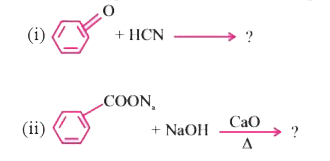
(iii) CH3−CH=CH−CN(a) DIBAL - H−−−−−−−−→(b) H2O?
(b) Give simple chemical tests to distinguish between the following pairs of compounds:
(i) Butanal and Butan-2-one
(ii) Benzoic acid and Phenol
Or
(a) Write the reactions involved in the following :
(i) Etard reaction
(ii) Stephen reduction
(b) How will you convert the following in not more than two steps:
(i) Benzoic acid to Benzaldehyde
(ii) Acetophenone to Benzoic acid
(iii) Ethanoic acid to 2-Hydroxyethanoic acidView Solution
Knowledge Check
- Question 1 - Select One
Read the given passage and answer the questions that follow by selecting the most appropriate option.
Renowned educationalist Sir Tim Brighouse, observed that an outstanding school has four factors that are visible. "Teachers talk about teaching, teachers observe each other's practice, teachers plan, organize and evaluate their work together rather than separately and that teachers teach each other." He continues "One of the reasons I like that is that you can immediately see ways in which you could make it more likely that teachers talk about teaching."
Sir Tim then encouraged schools to focus on activities that were low effort but high impact, describing them as 'butterflies'. Some examples he gave included rotating staff meetings around different classrooms with the host, at the start, approaches. With modern technology teachers could observe their own lessons and then when viewing them back, decide whether they want to share them describing the room layout and displays or discussing other teaching techniques and with a mentor. The role of mentoring was vital and suggested that more schools could send teachers out in small groups to learn from colleagues in other schools. He said "If this were widespread practice, if people were to attend to their butterflies, the outcome in terms of teacher morale and teacher satisfaction would be positive. We all agree that professional development is the vital ingredient":
The talk by Sir Tim is about theAteachers who dress like butterfliesBvisiting schools to socialiseCknowledge teachers gain for job growthDschools who control their teachers - Question 2 - Select One
Read the given passage and answer the questions that follow by selecting the most appropriate option.
Renowned educationalist Sir Tim Brighouse, observed that an outstanding school has four factors that are visible. "Teachers talk about teaching, teachers observe each other's practice, teachers plan, organize and evaluate their work together rather than separately and that teachers teach each other." He continues "One of the reasons I like that is that you can immediately see ways in which you could make it more likely that teachers talk about teaching."
Sir Tim then encouraged schools to focus on activities that were low effort but high impact, describing them as 'butterflies'. Some examples he gave included rotating staff meetings around different classrooms with the host, at the start, approaches. With modern technology teachers could observe their own lessons and then when viewing them back, decide whether they want to share them describing the room layout and displays or discussing other teaching techniques and with a mentor. The role of mentoring was vital and suggested that more schools could send teachers out in small groups to learn from colleagues in other schools. He said "If this were widespread practice, if people were to attend to their butterflies, the outcome in terms of teacher morale and teacher satisfaction would be positive. We all agree that professional development is the vital ingredient":
'Butterflies' here refer toAthe dress codeBa practice of staff interactionCchanging schoolsDgoing to classes in rotation - Question 3 - Select One
Read the given passage and answer the questions that follow by selecting the most appropriate option.
Renowned educationalist Sir Tim Brighouse, observed that an outstanding school has four factors that are visible. "Teachers talk about teaching, teachers observe each other's practice, teachers plan, organize and evaluate their work together rather than separately and that teachers teach each other." He continues "One of the reasons I like that is that you can immediately see ways in which you could make it more likely that teachers talk about teaching."
Sir Tim then encouraged schools to focus on activities that were low effort but high impact, describing them as 'butterflies'. Some examples he gave included rotating staff meetings around different classrooms with the host, at the start, approaches. With modern technology teachers could observe their own lessons and then when viewing them back, decide whether they want to share them describing the room layout and displays or discussing other teaching techniques and with a mentor. The role of mentoring was vital and suggested that more schools could send teachers out in small groups to learn from colleagues in other schools. He said "If this were widespread practice, if people were to attend to their butterflies, the outcome in terms of teacher morale and teacher satisfaction would be positive. We all agree that professional development is the vital ingredient":
Here, 'visible' meansAseenBobviousCappealingDbright
A compound has molecular formula C6H12O. It does not reduce Tollens or Fehling's reagent, but gives a crystalline derivative with 2,4-dinitro-phenyl hydrazine. With alkali and I2, it gives yellow solid with a medicinal odour. Clemmensen reduction converts it to 2-methylpentane. The structure formula of the compound is most likely to be:
View SolutionEach of the questions below consists of a question and two statements numbered I and II given below it. Use the data given to decide whether the data provided in the statements are sufficient to answer the question .
What does 'Ne' stands forin the code language?
I. 'N a Ni Nok Ne' means 'I will tell you ' and 'Ni Nok Ne Nam' means 'he will tell you ' in that code language.
II. 'Ni Ne Mo Nam' means 'will he call you ' and 'Ne Mok Sac Ni' means 'how iwll you go ' in that code language.View SolutionRead the passage given below and answer the following questions:
Aldehydes, ketones and carboxylic acids are few of the major classes of organic compounds containing carbonyl group. Aldehydes are prepared by dehydrogenation or controlled oxidation of primary alcohols and controlled or selective reduction of acyl halides. Ketones are prepared by oxidation of secondary alcohols and hydration of alkynes. Carboxylic acids are prepared by the oxidation of primary alcohols, aldehydes and alkenes by hydrolysis of nitriles and by treatment of Grignard reagents with carbon dioxide.
How will you distinguish between aliphatic aldehydes and aromatic aldehydes?View SolutionRead the passage given below and answer the following questions:
Reductive alkylation is the term applied to the process of introducing alkyl groups into ammonia or a primary or secondary amine by means of an aldehyde or ketone in the presence of a reducing agent. The present discussion is limited to those reductive alkylations in which the reducing agent is hydrogen and a catalyst or "nascent" hydrogen, usually from a metalacid combination, most of these reductive alkylations have been carried out with hydrogen and a catalyst. The principal variation excluded is that in which the reducing agent is formic acid or one of its derivatives, this modification is known as the Leuckart reaction. The process of reductive alkylation of ammonia consists in the addition of ammonia to a carbonyl compound and reduction of the addition compound or its dehydration product. The reaction usually is carried out in ethanol solution when the reduction is to be effected catalytically

Since the primary amine is formed in the presence of the aldehyde it may react in the same way as ammonia, yielding an addition compound, a Schiff's base (RCH=NCH2R) and finally, a secondary amine. Similarly, the primary amine may react with the imine, forming an addition product which also is reduced to a secondary amine Finally, the secondary amine may react with either the aldehyde or the imine to give products which are reduced to tertiary amines.

Similar reactions may occur when the carbonyl compound employed is a ketone.
(source: Emerson, W. S. (2011). The Preparation of Amines by Reductive Alkylation. Organic Reactions, 174–255. doi:10.1002/0471264180.or004.03 )
Reductive alkylation of ammonia by means of an aldehyde in presence of hydrogen as reducing agents results in formation of:View SolutionRead the passage given below and answer the following questions:
Reductive alkylation is the term applied to the process of introducing alkyl groups into ammonia or a primary or secondary amine by means of an aldehyde or ketone in the presence of a reducing agent. The present discussion is limited to those reductive alkylations in which the reducing agent is hydrogen and a catalyst or "nascent" hydrogen, usually from a metalacid combination, most of these reductive alkylations have been carried out with hydrogen and a catalyst. The principal variation excluded is that in which the reducing agent is formic acid or one of its derivatives, this modification is known as the Leuckart reaction. The process of reductive alkylation of ammonia consists in the addition of ammonia to a carbonyl compound and reduction of the addition compound or its dehydration product. The reaction usually is carried out in ethanol solution when the reduction is to be effected catalytically

Since the primary amine is formed in the presence of the aldehyde it may react in the same way as ammonia, yielding an addition compound, a Schiff's base (RCH=NCH2R) and finally, a secondary amine. Similarly, the primary amine may react with the imine, forming an addition product which also is reduced to a secondary amine Finally, the secondary amine may react with either the aldehyde or the imine to give products which are reduced to tertiary amines.
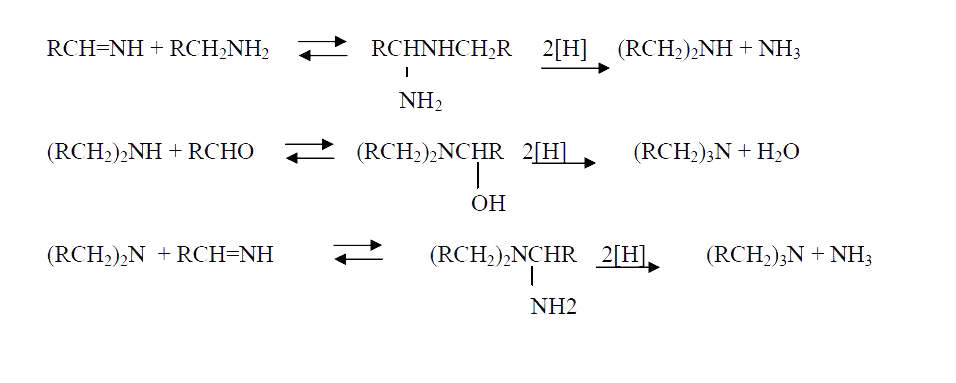
Similar reactions may occur when the carbonyl compound employed is a ketone.
(source: Emerson, W. S. (2011). The Preparation of Amines by Reductive Alkylation. Organic Reactions, 174–255. doi:10.1002/0471264180.or004.03 )
Acetaldehyde is reacted with ammonia followed by reduction in presence of hydrogen as a catalyst. The primary amine so formed further reacts with acetaldehyde. The Schiff’s base formed during the reaction is:View Solution

